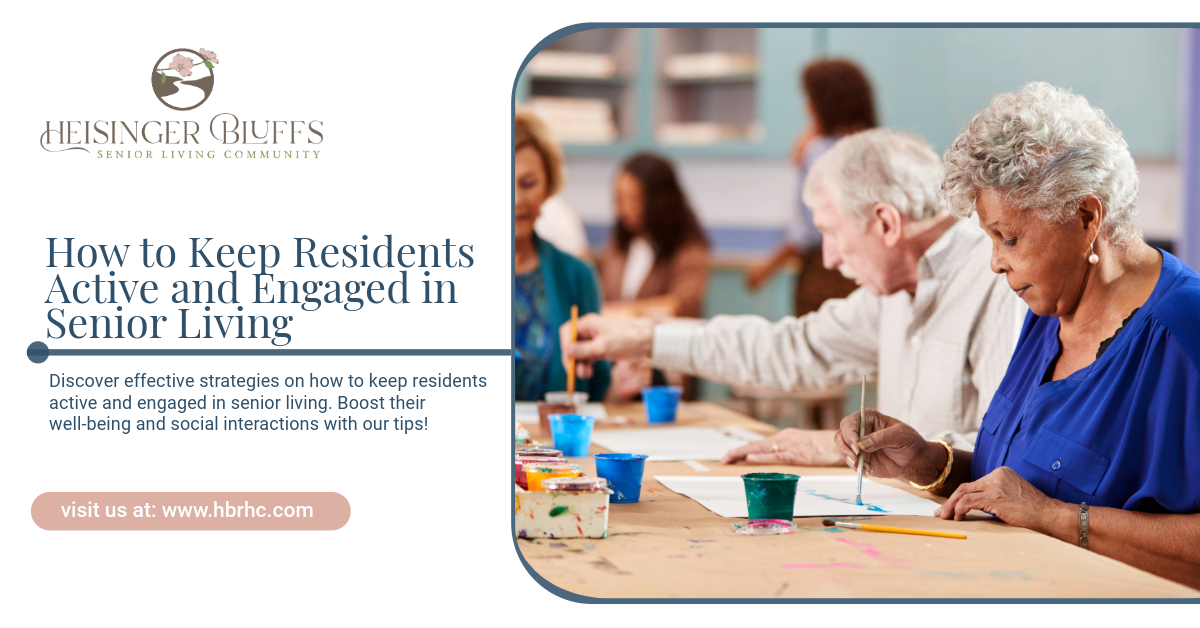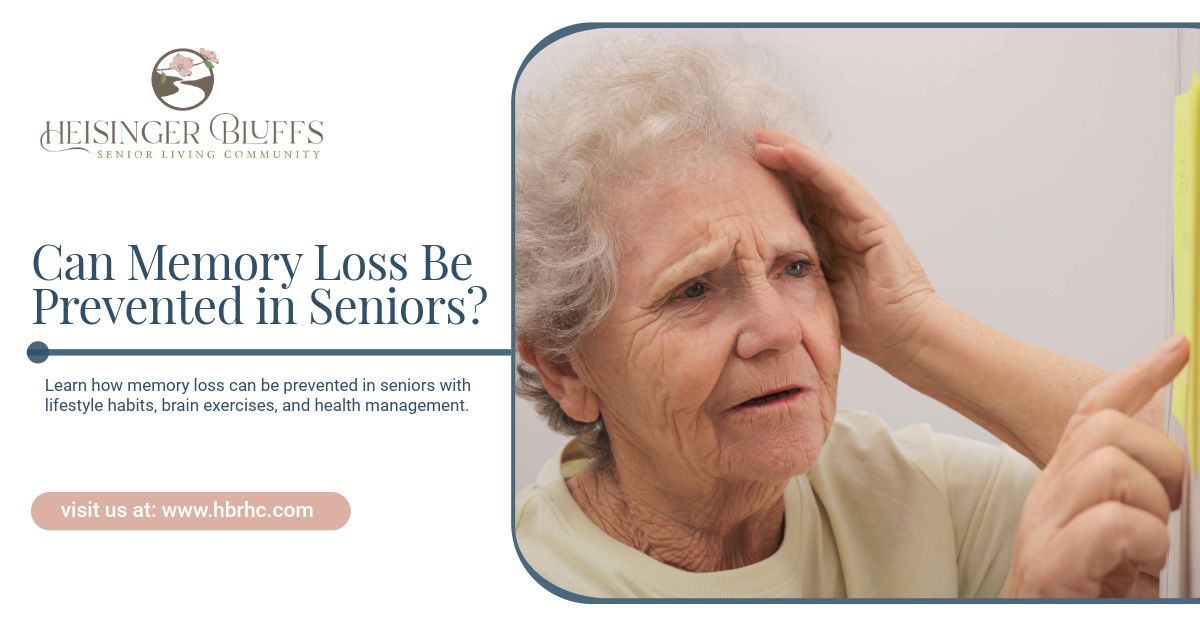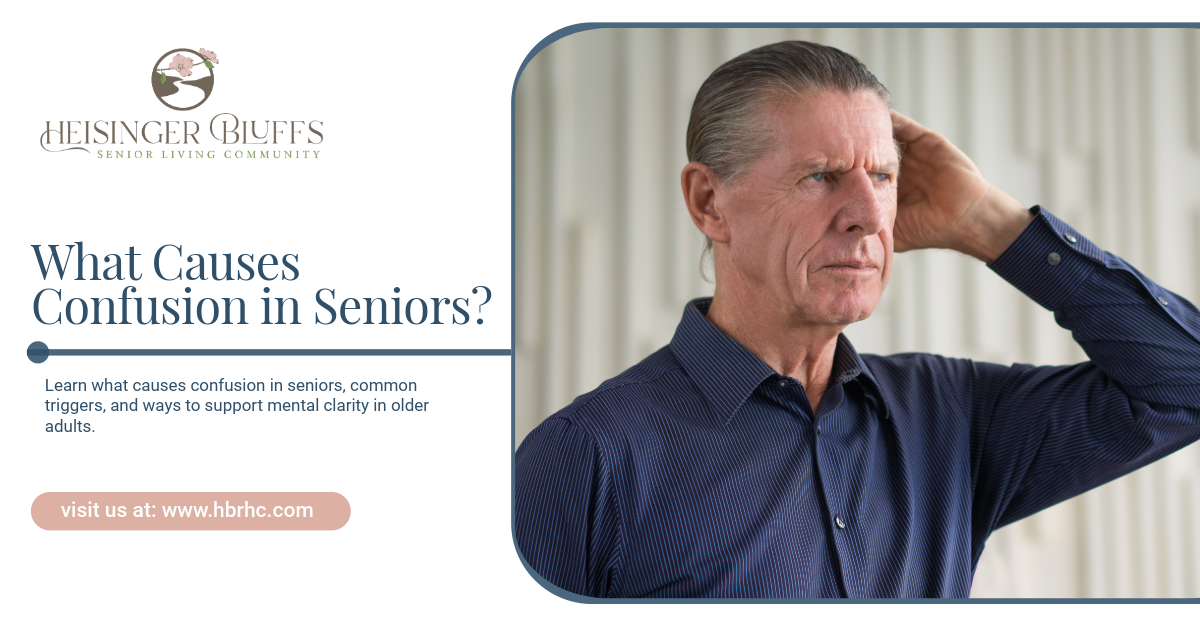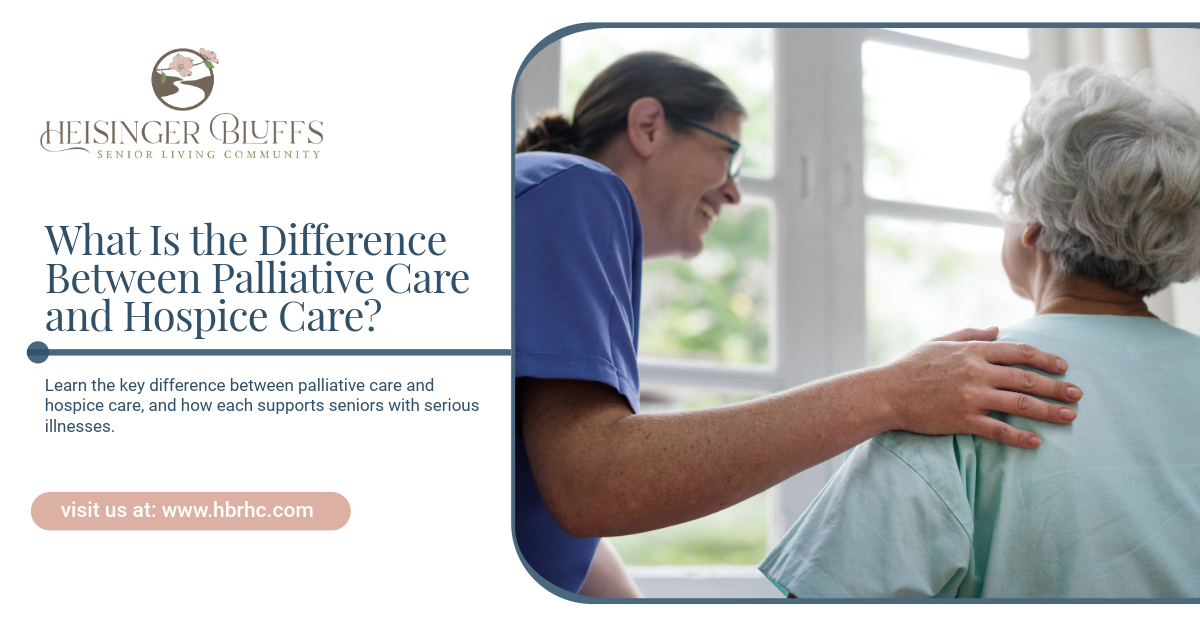How to Keep Residents Active and Engaged in Senior Living

Key Highlights
- Staying active in senior living communities boosts physical health, cognitive function, and overall quality of life.
- Social interaction through group activities fosters meaningful connections and combats isolation.
- Engaging programs promote mental stimulation, creating a sense of purpose and accomplishment.
- Assisted living facilities offer movement-based activities like fitness classes, chair yoga, and tai chi.
- Personalized programs tailored to residents' needs improve their participation and enjoyment.
- A supportive environment featuring outdoor spaces and community events enhances mental health and helps residents thrive.
Senior living is not just about having a place to stay. It is a way of life that supports health, happiness, and being part of something every day. Being active is important for your mental health and for keeping a good quality of life, especially for older adults. The best senior living communities offer activities that fit the needs of each person. These activities can help make each day better. Some give chances for social interaction, and others help you stay fit and strong. With the right support, senior living can change lives. Let’s look at why this matters and how you can create the right environment for everyone in the community.
The Importance of Activity and Engagement in Senior Living
For older adults, being active in assisted living homes is important. It helps both the body and mind. Taking part in different activities can help older people keep their thinking skills strong. It can also stop them from feeling alone and help them make new friends. When staff in assisted living places get people involved, they can improve the overall quality of life and give each day more meaning.
Programs made for older adults in senior care do more than meet basic needs. They let people live with energy and happiness, no matter their interests or what they can do. By using activities that are right for each person, older adults can find joy and feel close to other people every day. This can help their cognitive function and improve their overall quality of life in assisted living.
Physical and Mental Health Benefits
Physical and mental stimulation are very important for people who want to have good health as they get older. Moving your body often helps make muscles stronger, keeps balance steady, and helps a person stay able to move. These things are needed to stop falls and to stay active. Many communities have fitness classes. Some of these are tai chi and chair yoga, and there is a class for every skill level.
Mental stimulation is good for keeping the mind working well. It helps with memory and lets a person keep making choices well. You can get this kind of mental boost from things such as puzzles, brain games, or easy competitions like trivia.
The best way is to use both physical and mental activities. Doing both gives people a balanced life. Things like aerobic fitness classes, dance times, and guided stretching can give people more energy to people. They also help people meet and talk to others. These types of programs help keep up mental health and also help the body stay in shape for everyday living.
Building Social Connections and Reducing Isolation
A sense of belonging is one of the most important things for a good and happy life. Senior living places help people feel connected with others. They offer group activities like book clubs and game nights. These fun times help people make friends and feel less lonely.
There are shared spaces in assisted living, like common dining rooms and outdoor spaces. Here, people can sit together, talk, eat, and relax. They can also go outside to places like gardens or take walks on walking paths. These outdoor spaces make it easy to talk with others about hobbies or things they like.
Inside these communities, there are support groups that bring together people with the same problems or life stories. This helps everyone feel that they are not alone. Some assisted living communities also have programs where people can meet and talk with younger generations. These programs help build understanding and create new bonds and friendships for all ages.
Understanding the Interests and Needs of Senior Residents
Recognizing resident needs is important in assisted living. When you know what each person wants and needs, activities can have a real impact. Assisted living places use a personal approach. This helps them learn more about what each person enjoys, their physical fitness, and their cognitive abilities. By knowing these things, they can make both group and solo activities that people look forward to.
It is key to build a supportive environment that honors each person’s background. This could be through cultural programs, hobbies, or therapeutic activities. Good planning helps meet so many different wants and abilities. This support boosts mental health and makes sure everyone finds purpose in what they do. By focusing on these needs, each member of the community enjoys richer and more meaningful experiences.
Assessing Individual Preferences and Abilities
Creating care plans that fit each person starts with knowing the preferences and abilities of the residents. Staff and family members help with assessments. They find out about the person's physical fitness, cognitive abilities, and how much help they need with daily activities.
- Personalised Plans: Each person has their schedule. This makes sure the physical and cognitive challenges are right for them.
- Family Involvement: Family members share what they know about hobbies, past jobs, and cultural habits. This helps to make activities that suit each person in senior living communities.
- Daily Adjustments: Staff keep an eye on how things are going. They change care plans if there are new needs or if a resident’s preferences or abilities change.
Using these ways, senior living places create a good environment for everyone. This helps boost mental health and keeps all residents involved. Working with family makes the care plans even better by making sure each person feels special and included.
Overcoming Barriers to Participation
Every resident in assisted living may have different challenges, and some may find it hard to join in. Assisted living communities look for ways to help by creating a supportive environment. They keep in mind things like limited mobility or other needs.
Caregivers work with healthcare professionals and families to make programs that fit everyone. They help make sure all people can join in. The community uses therapeutic activities, such as music therapy or pet visits. These things are great for building confidence in people who may feel nervous in groups.
Giving every resident a sense of purpose is very important. Caregivers encourage people to take part in small groups. They also let people take the lead in some activities. This way, residents can feel more comfortable joining in. Finding ways to include all helps boost mental health and builds social connections for everyone.
Beginner’s Guide: How to Create an Engaging Activity Program
Designing activity programs in an assisted living facility starts with knowing what the residents like to do. It is important to offer a variety of activities that match their physical and cognitive abilities, so no one feels left out or left behind.
To make programs that everyone can enjoy, staff, families, and residents work together. Outdoor spaces, therapeutic activities, and memory care are a big part of what can be offered. With the right planning, the community gives older adults a good mix of fun and chances for everyone to join in. This way, they can live with purpose and joy at an assisted living facility.
What You Need to Get Started: Resources, Equipment, and Support
Launching successful programs means you need smart planning and the right tools:
- Spaces: Good outdoor spots and handy indoor rooms are best for many things to do. Walking paths, along with gardens, give a calm place to relax.
- Resources: Learning tools and creative kits help with hands-on learning, and a simple game like bingo can boost people’s cognitive abilities.
- Staff and Healthcare Professionals: Trained staff keep you safe when you do physical things like chair yoga or stretching. Skilled nursing and healthcare professionals can give you important advice about health.
- Dining Options: Fun food events like cooking classes or special dinners help people join in and talk with each other.
When you use all these things together, you make sure every activity fits the group’s needs and leads to the right choice for a place where everyone has a good time.
Step-by-Step Guide to Designing Activities for Senior Living
| Phrase | Key Actions |
|---|---|
| 1. Surveys | Do surveys to find out what the residents like, what hobbies they have, and how fit they are. |
| 2. Set Objectives | Set goals to help people talk with each other, keep their minds active, or get better at moving. |
| 3. Execute Plans | Make groups of staff and residents who will help plan and run the programs. |
| 4. Monitor Feedback | Ask people taking part in the activities what they think, so you can make better plans next time. |
| 5. Evolve | Change up the activities from time to time, so that they stay fun and fresh. |
If you follow these steps, people will want to take part, and it will help make a friendlier place to live where social interaction is easy.
Step 1: Gather Resident Input and Set Goals
Building better programs starts with listening to what people have to say. Ask residents questions or set up focus groups to learn about their hopes, hobbies, and the work they did before.
Family involvement is very important. It brings a personal touch to activities by finding out what makes them happy or reminds them of good times. Working together can lead to special ideas, like themed memory times or trips that match their past interests.
When you know what everyone wants, set clear goals to help improve their sense of accomplishment. Keep communication open between families and staff. This helps create a supportive environment where everyone can do well.
Step 2: Plan Varied Activities (Physical, Social, Cognitive)
Planning many types of activities is key to building a strong and lively community. Adding physical, social, and thinking activities helps people in many ways. Chair yoga and tai chi are good for keeping up physical fitness. Game nights and group activities help grow social connections between people. Book clubs and trivia events are good cognitive challenges and help you keep your mind sharp. Using all these things helps everyone in the community feel better, giving them a sense of purpose and belonging. This brings a higher quality of life for all.
Step 3: Implement, Monitor, and Adjust Your Program
Start by making sure healthcare professionals and committee leaders work well together. It is important to plan every step. Programs like skilled nursing care go hand in hand with exercise and time outside. These things help people every day.
Check how things are going by asking residents what they think about everything, like how clear things are, their comfort, and if they enjoy the program. Collect what they say, and use it to make any changes you need. This lets the programs get better over time.
The last changes make sure that everyone feels welcome and that the community stays vibrant. If you watch the programs closely, new ideas can match the main goals. This helps improve quality of life and keeps activities meaningful for all.
Final Thoughts
Encouraging active engagement in senior living communities is essential to creating a vibrant, fulfilling lifestyle. By understanding each resident’s unique interests and needs, you can design activity programs that support physical health, enhance mental well-being, and foster meaningful social connections. Regularly reviewing and updating these programs based on resident feedback ensures they remain relevant and enjoyable.
Prioritizing engagement goes beyond filling a calendar, it’s about enriching lives and creating a warm, welcoming community. Interested in seeing what active senior living truly looks like? Contact Heisinger Bluffs or schedule a visit today. Discover how our vibrant programs bring residents together and make each day more fulfilling.
Frequently Asked Questions
How do you encourage participation in group activities?
Creating a supportive environment helps people who live there feel welcome. This can make them want to join in. Resident committees, buddy systems, and fun activities like social rewards help grow a sense of belonging.
What safety measures should be considered during activities?
Making sure there is good supervision, getting input from healthcare professionals, and having the right equipment can help lower risks. Use adaptive tools for residents who have physical or mental limitations to keep them safe.
Sources:
- https://www.nia.nih.gov/health/brain-health/cognitive-health-and-older-adults
- https://pmc.ncbi.nlm.nih.gov/articles/PMC10426317/
- https://www.who.int/news-room/fact-sheets/detail/mental-health-of-older-adults











